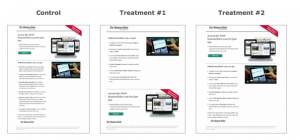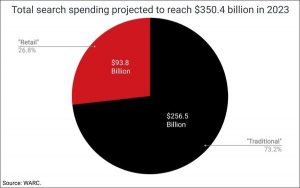Since the pandemic altered our lives, the workforce has been going through various changes, causing subtle and more intense disruptions. The most profound alterations are working from home, virtual hiring, and global unemployment.
A 2020 Gartner survey found that 48 percent of employees will work remotely even in the post-pandemic era, compared to 30 percent before COVID-19 started. That requires strategic thinking and appropriate procedures that ensure everyone, including new workers, is comfortable and ready for telework.
But remote work is not the only change affecting workforce planning. According to the Workforce of the Future report by PwC, 37 percent of people are worried about automation putting jobs at risk, and 60 percent fear they might not find stable, long-term employment after technology takes over.
These worries might make job seekers more inclined to ensure employment. However, they could also be more willing to adopt new skills and align with the market. Diversity is another critical factor influencing workforce planning and how companies go about it.
Even though inclusive and diverse values were increasingly significant before 2020, last year’s societal upheavals made them an essential part of recruitment. HR professionals need to keep in touch with these trends, principles, and changes and align them with workforce planning.
Because of that, they should leverage all available tools and platforms to make this process smoother and ensure data-driven recruiting. Undoubtedly, talent intelligence ranks highly in this procedure.
Meaning and Role of Talent Intelligence
Talent intelligence resembles business intelligence as it collects and assesses data to forecast future trends and outcomes. For instance, business intelligence is neat and coherent, allowing a smooth organization and classification.
Talent intelligence follows a similar principle by assembling data containing information about numerous professionals and companies. After gathering all the input in one place, talent intelligence allows business leaders and HR professionals to extract what’s relevant and meaningful.
It analyzes millions of resumes, qualifications, experiences, job titles, and achievements to deliver systematic, unbiased, and coherent information. After that, talent intelligence offers forecasting analytics and valuable insights.
Thanks to its incredible potential and science-based approach, talent intelligence is only in the early stage of becoming an essential part of workforce planning and data-driven recruiting.
Talent Intelligence as a Part of Workforce Planning
Ultimately, talent intelligence has the power to enhance workforce planning and, in the process, overall recruitment. It can optimize the procedure, streamline it, and return more accurate results.
Depending on the software, talent intelligence can provide a company with migration reports, analyze source and quality of hire, labor market qualifications and gaps, and comparisons. For example, HR professionals can identify where alumni workers end up after terminating their employment. Thanks to these insights, they can discover how their competitors attract and maintain talents.
But recruiters can also find out which channels are the most efficient in sourcing job applicants and how many results in actual recruitment. Besides, they can leverage talent intelligence to detect skills shortages in a particular department or team and establish efficient strategies.
Moreover, talent intelligence allows comparisons with the competitors to identify how much other businesses pay their employees in similar job roles and positions.
Due to being science-based, talent intelligence enables HR departments to evaluate talent within their workforce, discover what makes their workers happy, and what competitors do better (or worse). Thanks to that, companies can fill skill gaps, upskill their staff, and nurture data-driven recruiting.
However, there’s even more to talent intelligence and its possibilities.
Talent Intelligence Enables Diversity Within Workforce
One of the worst obstacles in nurturing diversity is the unconscious recruitment bias. Even though they’re not aware of it, HR professionals often let their gut instincts, stereotypes, and prejudices affect the selection process.
Talent Intelligence is coherent, and it disables bias from the hiring process. As software that uses advanced technology and relevant information only, talent intelligence doesn’t require the presence of recruiters during the candidate screening.
Moreover, it gauges large chunks of data and extracts the most compatible candidates, even if their job title doesn’t match the job opening. That allows diverse groups of people to reach the surface as high-quality candidates.
Sadly, job applicants from these groups usually have more limited access to education, promotions, and professional growth. Because of that, even though they might deserve a chance, they don’t get it due to their background and social categories.
But talent intelligence dives beneath the surface level and assesses all relevant information, ensuring data-driven recruiting and compliance. Thanks to that, all job applicants get the same treatment, attention, and respect.
The outcome is greater diversity, data-driven recruiting, and candidate evaluation based on data instead of individual perceptions.
Workforce planning shouldn’t only be about what benefits the company. Instead, it should be about what works for its current and future employees, as that’s the only way to ensure long-lasting successful results.
Talent intelligence is fast, concise, and science-based, making it an inclusive technology that works for the best of both employers and candidates. It helps organizations streamline workforce planning, extract essential information quickly, and hire without unconscious bias.
But talent intelligence also ensures each job applicant gets an equal opportunity, fostering diversity and data-driven recruiting.
Business & Finance Articles on Business 2 Community
(46)






